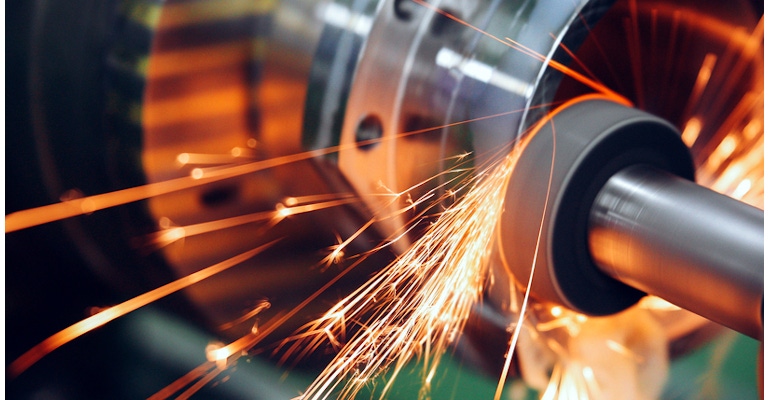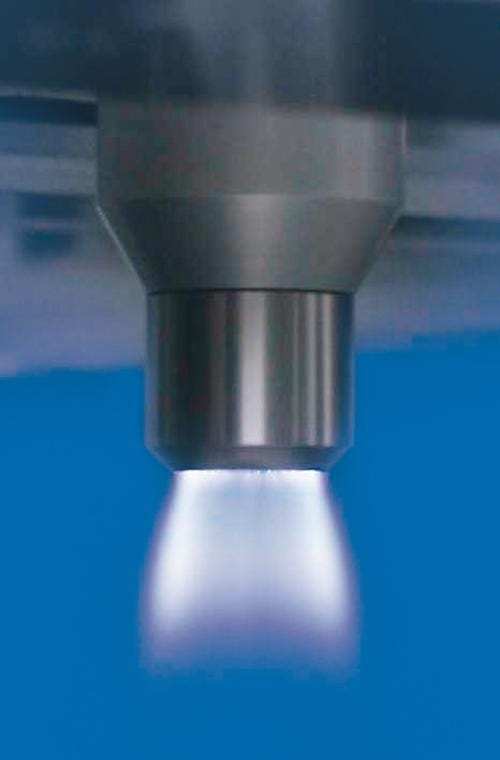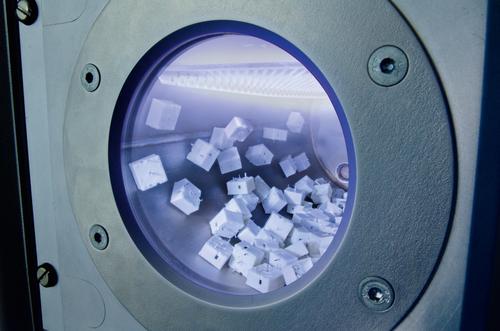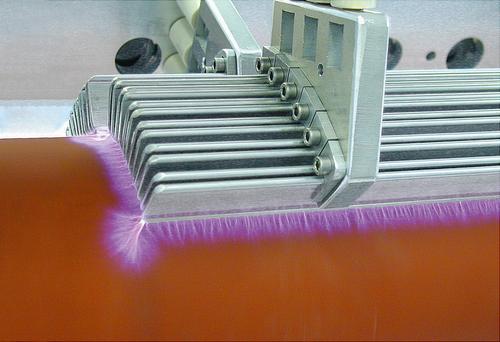The Secret Behind Better Material Adhesion Is Surface Pretreatment
If you want the bonds between your design's components to be reliable and highly resistant to humidity, extreme temperatures, and aggressive substances, then surface pretreatment of those components is a must.
August 12, 2015

Kevin Balben, product specialist at DELO Industrial Adhesives LLC
Advances in technology have increased the number of surface pretreatment choices, ensuring that you will be able to find a reliable method that meets the specific needs of your bonding materials and your production processes.
One popular pretreatment method is to apply solvents to the component's surface to remove simple contaminants. However, this method can only be used under certain conditions. For instance, a ketone, like acetone, works well for cleaning metals, but may be too harsh for certain plastics. Alcohol, like isopropyl alcohol, is a good solvent to use with plastic substrates, although not with silicone oils. While solvent cleaning is an easy method, it only prepares surfaces for bonding. It does not pretreat them.

There are, however, a variety of mechanical, physical, chemical, and combined pretreatment methods that can further increase the strength and durability of a bond. Whether you choose one or a combination, each must be carefully adapted to the adhesive, the material bonded, and the production processes in place.
Grinding and Blasting
Grinding and blasting are two examples of mechanical pretreatment used primarily for metal pretreatment. Both techniques clean the surface by abrading the material and then enlarging the effective surface by increasing its roughness. Grinding effectiveness depends on the grinding material and its grain size, whereas blasting effectiveness depends on the blasting agent's impact speed and impact angle, as well as its type, size, hardness, and shape.
A disadvantage of mechanical pretreatment is that final cleaning is needed to remove accumulated chips. This can be done by using compressed air or a lint-free cloth, but it can prove particularly difficult when pretreating components with complex geometries. This extra step is the reason why these methods are rarely used in high-volume industrial production and, instead, found in small series production and large structural bonding applications.
Pickling
Pickling is an example of a wet-chemical pretreatment method. Components are placed in a dipping bath with a reactive chemical solution, which changes the boundary layer and improves bondability.
What makes pickling so advantageous is that all areas of the component are pretreated. Thus, it can also be used for components with complex geometries. Its disadvantages are occupational health and process considerations. The effectiveness of pretreatment intensifies as the aggressiveness of the pickling solution increases. It's also a very complex method: after dipping, the components must be rinsed and later dried. In an effort to adhere to environmental regulations, the dipping bath must be changed regularly and disposed of safely.
Surface Pretreatment for Improving Plastic Bonding
As bonding different plastic components is one of the most common tasks for adhesives, a variety of surface pretreatment methods can be applied to enable reliable plastic bonds. Pretreatment improves adhesion to plastics by increasing the plastic's polarity and surface energy. The most effective and most common physical surface pretreatment methods include atmospheric-pressure plasma, low-pressure plasma, corona discharge, and flaming.
Due to their high level of cleanliness and low occupational safety demands, physical-chemical methods like plasma play a greater role in industrial production than mechanical and wet-chemical methods like blasting and pickling.
In order to create the perfect bond when using physical-chemical methods, components should be bonded immediately following surface pretreatment because pretreatment vanishes over time. If a component is left inactive for a day, it's as if pretreatment never occurred, and the activated surface becomes passive again.
If for some reason you cannot bond immediately after pretreatment, primers can be used as a surface post-treatment method. A primer works as an adhesive agent and reacts with the component and the adhesive layer, strengthening the bond. Given the high requirements placed on cars, and their long lives, primers are often used in the automotive industry.
Atmospheric Pressure Plasma Treatment
First, let's look at atmospheric pressure plasma treatment. Plasma is a particle flow of ionized air or process gas such as nitrogen. In order to disassociate and ionize the atoms or molecules of a gas, a high-energy field activates the gas, creating plasma. Transported onto a component's surface, plasma causes a breakup of bonds of near-surface molecules. The plasma then attaches processed gas particles onto the surface of the plastic, increasing the surface's polarity. This activates the surface and significantly improves its wettability, which also contributes to a high bond strength and a high temperature and chemical resistance.
Atmospheric pressure plasma is well suited for fully automated in-line processes because it can be quickly applied with a nozzle. However, it is only conditionally suitable for complex, three-dimensional structures.
Low-Pressure Plasma
In contrast to atmospheric pressure plasma, low-pressure plasma is suited for use with components with complex geometries such as undercuts, boreholes, or slots. The low pressure in the plasma chamber leads to an evaporation of the low-molecular, plasma-cracked decomposition products of contaminants, resulting in a high cleaning effect. As the energy of the electric field generated under low pressure is very high, this method works deeper into the component's surface and lasts longer than the other forms of pretreatment.

Corona Discharge
Corona discharge is another, rather special, plastic pretreatment method. Very similar to plasma, surface molecules are split via exposure to high-voltage discharge, resulting in a surface with increased polarity and improved bondability. Corona discharge is a very quick, large-area process in which several square feet per second can be pretreated. Due to its design, corona discharge can be used mainly for thin substrates such as foils in the packaging industry, or paper in the printing industry.

Flaming
In the flaming method the temperature and the created flux lead to evaporation and removal of contaminants. At the same time, excessive oxygen reacts with the molecular bonds cracked open on the surface, increasing the polarity of the surface. Depending on the material and the adhesive, flaming increases the bond strength like corona discharge but less efficiently than plasma. The advantage of flaming is that it is easy to integrate into in-line processes.
Disadvantages of flaming include thermal stressing of the components and occupational health issues due to the open flame. This method is generally used for larger components in the building sector.
These four plastic pretreatment methods can change the surface characteristics of plastics, but when used for metals they will only remove contaminants. While this may be sufficient for some applications, two additional methods can be used for the surface pretreatment of metals.
Surface Pretreatment for Improving Metal Bonding
Over the years, sandblasting and coating (SACO) has been established as a special method for pretreatment. This unique process forces silicate-coated corundum grains towards a component using a sand-blasting device. These grains roughen the component's surface while removing loose particles and coating the surface.
When the corundum grain meets the component's surface, a chemical reaction called tribo-chemistry occurs. This chemical reaction helps to significantly increase the durability and reproducibility of a bond, while also giving the component's surface better protection against corrosion.
SACO works well for metals like aluminum, steel, magnesium, or titanium and even for plastics that are normally difficult to bond, such as polyolefins. Creating a distinct surface, this method is excellent for bonding components of different substrate types. SACO can be modified for high numbers of pieces, but since it requires a batch process it is ideal for smaller volumes as well as repair applications, because sandblasted areas offer a different appearance. However, this method cannot be used in in-line processes; it's suitable only in batch processes, which makes it difficult and/or expensive for high-volume applications of hundreds of thousands of pieces a year or more. Further limitations of this method are that it requires subsequent cleaning, either in the form of compressed air or wiping.
Laser Pretreatment Is a Growing Trend
The use of laser pretreatment has become a growing trend in recent years. When using this pretreatment method, the energy of a laser activates the surface. When its intensity is increased, the rising energy expands the oxidation of the surface, and areas near the surface begin to melt. The higher the intensity, the stronger the pretreatment results will be.
In the case of stainless steel, which is usually regarded as a complicated material to bond, a recent study indicated that laser pretreatment is an excellent alternative to wet- or tribo-chemical methods that have been used for stainless steel bonding for years. While SACO pretreatment achieved better results compared to a low-intensity laser, laser pretreatment at the maximum intensity is as effective as SACO. The laser specimens in the study achieved basically the same tensile shear strength values after simulated aging as those of SACO-pretreated specimens.
As the cost of lasers has dropped considerably, this pretreatment method can now be more cost-effective. While still a bit of an investment, lasers offer very low operating costs and enable efficient in-line processes. Given the strong focus of a laser, selective pretreatment is easier to implement than with other methods because only those parts of a component where adhesive will be applied will be lasered.
Kevin Balben is a product specialist at DELO Industrial Adhesives LLC.
You May Also Like



